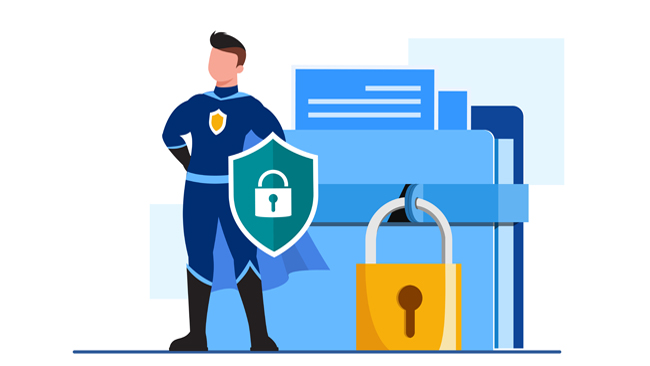Cyberattacks have become increasingly common, with data breaches and cybercrime costing businesses millions annually. In today’s fast-paced digital world, companies must prioritize cybersecurity in their Go-to-Market (GTM) strategies to protect their data and analytics. Implementing strong security measures throughout the GTM process is essential to minimize the risks associated with cybersecurity threats.
Security Measures to Consider
When planning a Go-to-Market strategy, it’s essential to take security measures to protect your company’s intellectual property, customer data, and overall reputation. Here are some security measures to consider:
1. Conduct a Risk Assessment
Risk assessment is critical in developing a robust cybersecurity strategy for a GTM plan. A risk assessment involves identifying and analyzing potential security risks that could impact the success of your GTM strategy. This process helps you understand the risks involved in your business activities, evaluate their potential impact, and prioritize the measures needed to mitigate them.
The following is a breakdown of the components involved in a risk assessment:
- Identify all the assets in your GTM strategy, such as customer data, intellectual property, and other sensitive information.
- Identify potential cybersecurity threats that could affect these assets. These can include phishing attacks, malware, insider threats, and more.
- Determine the vulnerabilities in your systems, processes, and people that these threats could potentially exploit.
- Prioritize the risks based on their potential impact and the likelihood of them occurring.
- Develop a plan to mitigate each identified risk, including measures to prevent, detect, and respond to potential security incidents.
2. Implement Strong Access Controls
Strong access controls are crucial in developing a robust cybersecurity strategy for a GTM plan. Access controls are security measures limiting access to sensitive data and systems to authorized personnel. Strong access controls can help prevent unauthorized access to your data and systems, reduce the risk of data breaches and cyberattacks, and protect your company’s reputation and assets.
3. Encrypt Data
Encryption involves converting sensitive data into a coded format, making it unreadable and unusable for anyone without the proper encryption key. Strong data encryption can help protect sensitive data from potential cyber threats, such as data breaches, cyberattacks, and theft.
4. Have a Security Incident Response Plan Ready
A Security Incident Response Plan outlines the procedures an organization must follow in case of a security breach or other cybersecurity incidents. It helps organizations respond quickly and effectively to a security incident, minimize the impact of the incident, and ensure that the organization can resume normal business operations as soon as possible.
When developing a Security Incident Response Plan, organizations need to keep the following in mind:
- Identify critical personnel and assign their roles and responsibilities in case of a security incident.
- Establish a communication plan that outlines how the organization communicates with internal and external stakeholders during a security incident.
- Define incident response procedures that specify the steps required during a security incident.
- Establish incident reporting requirements that mandate reporting all security incidents, regardless of severity.
- Test the Security Incident Response Plan regularly and refine it based on the testing results and any changes in the organization’s IT environment, business operations, or regulatory requirements.
5. Train Employees
Employees can be the most robust line of defense against cyber threats and the weakest link in an organization’s cybersecurity posture. It is crucial to educate employees on cybersecurity best practices and increase their awareness of potential cyber risks they may encounter.
Employees must be well-versed in security best practices, such as creating strong passwords, identifying phishing attacks, and handling sensitive information.
6. Perform Regular Security Audits
A security audit systematically evaluates an organization’s security posture, which helps identify security weaknesses and areas for improvement. Regular security audits help organizations identify and address vulnerabilities before cybercriminals exploit them.
7. Secure Your Supply Chain
Each participant in a supply chain, a network of organizations and individuals involved in creating and delivering a product or service, poses a potential cybersecurity risk.
Conclusion
A robust Go-to-Market (GTM) cybersecurity plan can protect organizations against cyber threats, reduce the risk of breaches, and ensure compliance with security regulations and standards.
By prioritizing cybersecurity and implementing a well-rounded GTM cybersecurity plan, organizations can protect themselves against cyber threats and gain a competitive advantage by demonstrating their commitment to protecting customer data and maintaining a solid security posture.
Moreover, seeking assistance from industry-specialized tools can enhance an organization’s cybersecurity posture through advanced threat detection, response capabilities, and comprehensive security analytics.
With the proper cybersecurity measures and planning, organizations can confidently launch their GTM strategy, knowing they have taken the necessary steps to protect their business, customers, and reputation.




Leave a comment
Have something to say about this article? Add your comment and start the discussion.